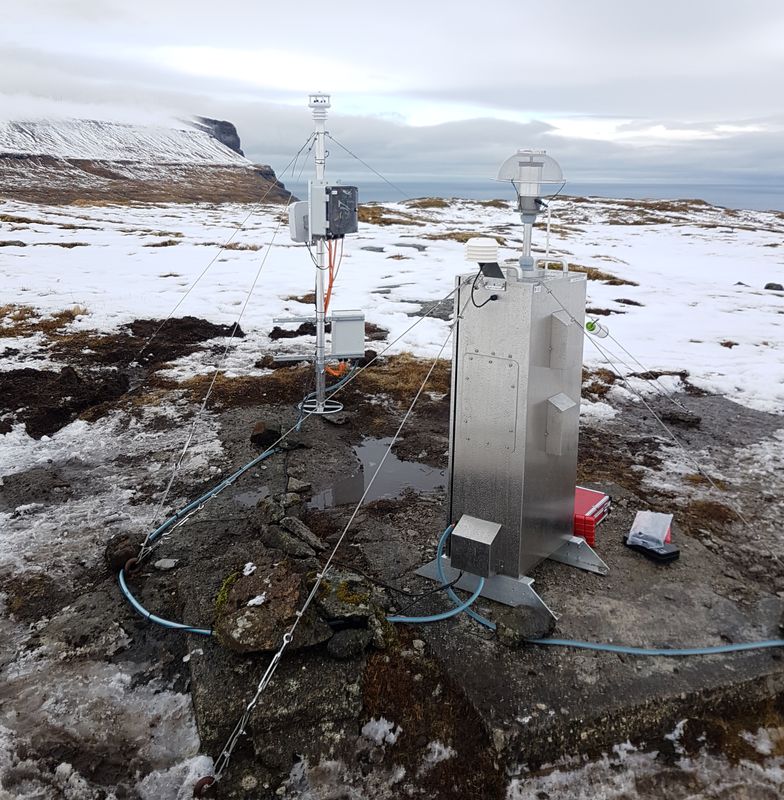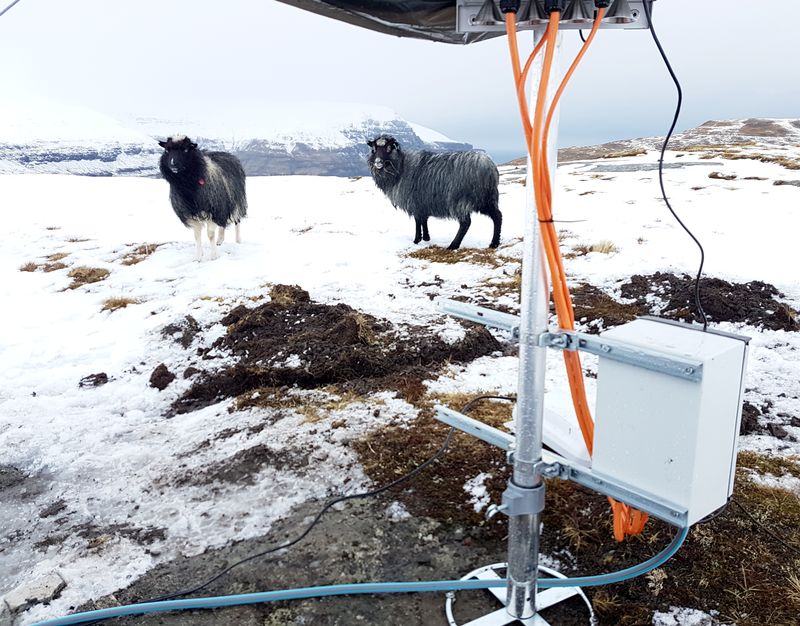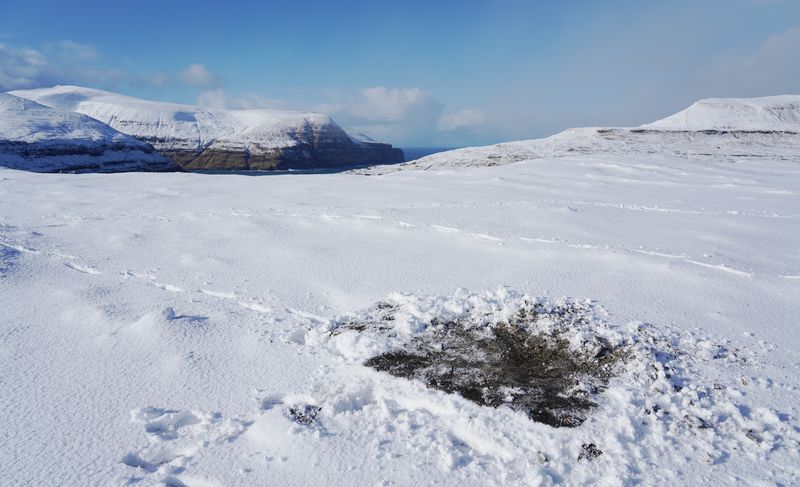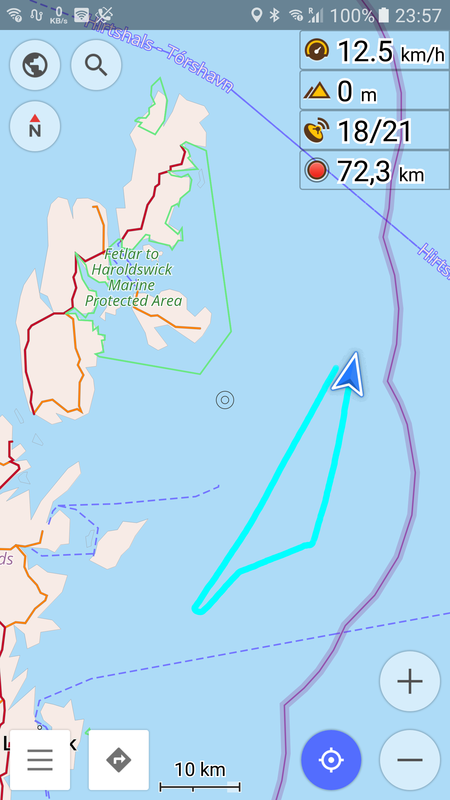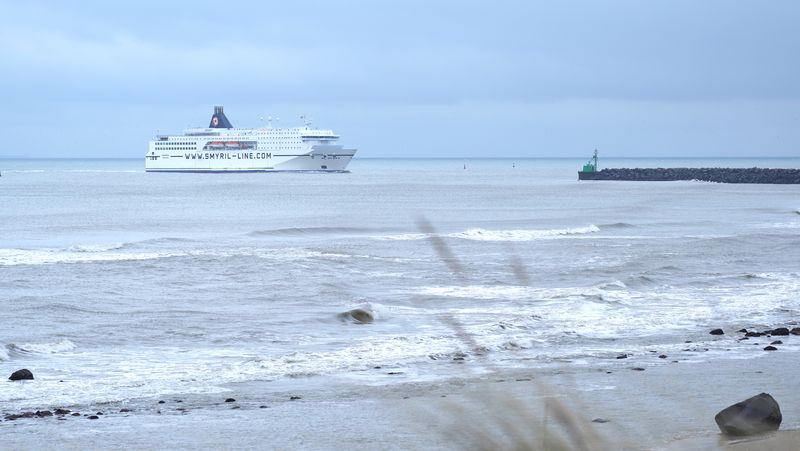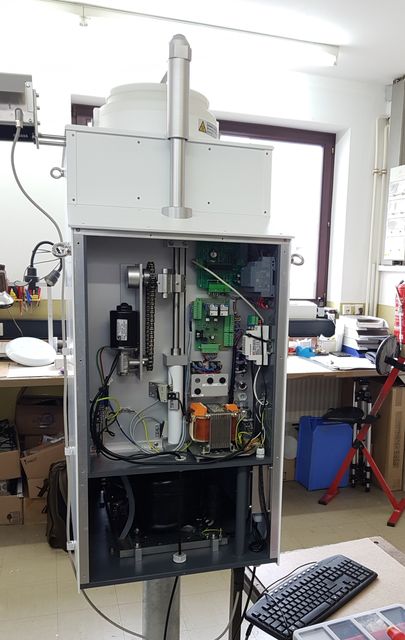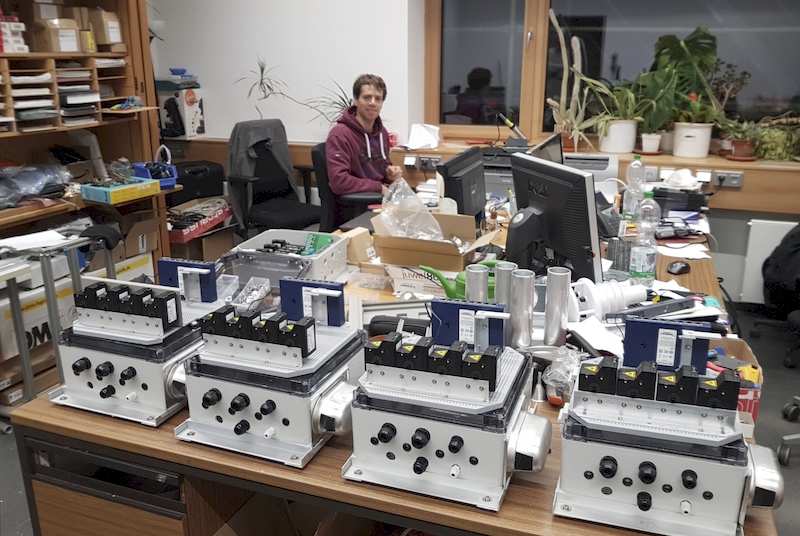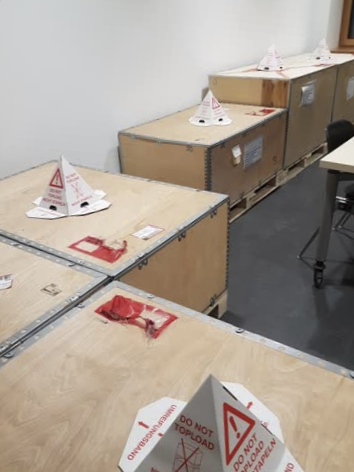Yesterday in the morning, we could fix the mast and seal the OPC boxes, where two of the plastics threads were broken in the cold. We’ve learned that we have to do the according replacement for all stations.
Today – on our way to the meeting with Ingvard, our local station care-taker – the ‘moose’ suddenly rumbles unpleasantly and stops. The central transmissing shaft is broken. What a mess!
We call Ingvard, who comes by and picks up the supplies. The instructions we planned to give to him will have to be done remotely.
Meanwhile, we mobilize the German Motorcar Club, and after two hours of waiting, the Faroese fire brigade comes and pickups the car. But where to go to? The biggest Toyota workshop is too busy, so we have the moose put onto the ferry for Iceland. A broken car on the ferry? – Common business, the fire brigade tells us. – But what about the trailer, which is still at our living place? As the tow truck can’t go there, they promise us to send another one for the trailer.
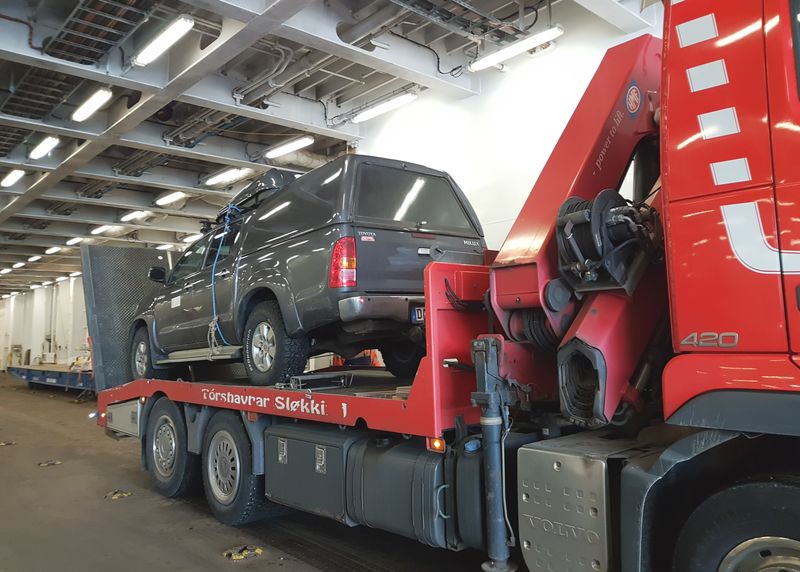
Ten minutes before the scheduled ferry departure, Konrad is still waiting at the trailer, while Thomas stands ready with the day luggage to enter the ship. ‘Being nervous’ is not anymore an adequate description. Five minutes before departure, the fire brigade shows up – their car was in repair. We make it spot-on onto the ferry – which tells us, ten minutes later, that the departure will be delayed due to technical issues…
The fire brigade did a great job is helping us. They dealt flexibly with the circumstances and with Smyril Line. Many thanks for that!
Tomorrow, when arriving to Seyðisfjörður, we will need to find tools for a quick repair, so that we can make it to a workshop in Egilsstaðir. Unsurprisingly, this has a high chance of troubling our plans.


